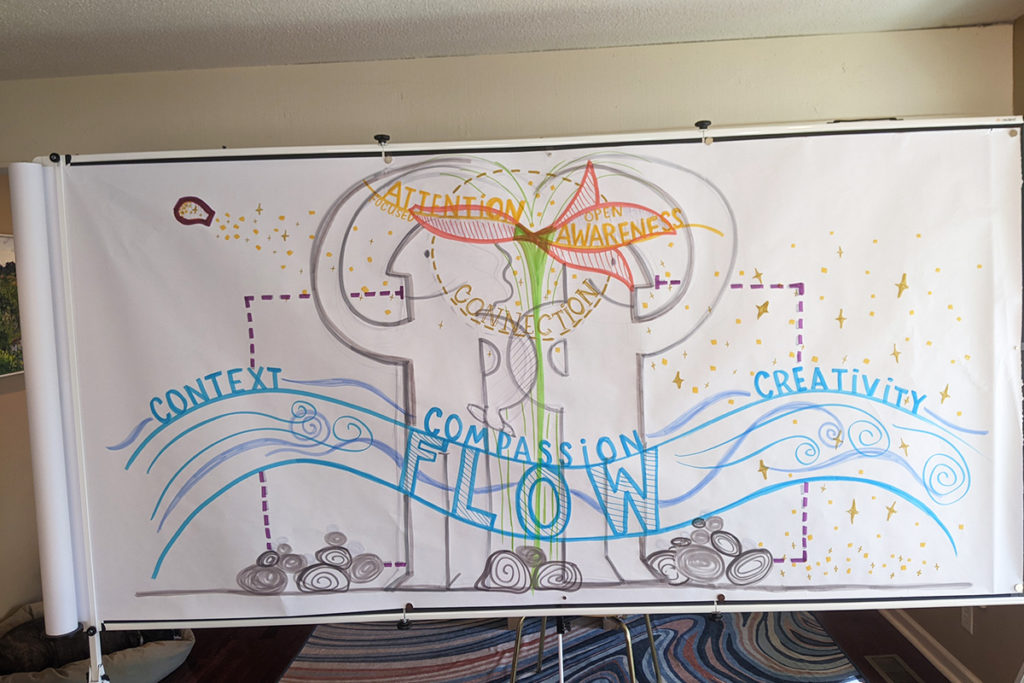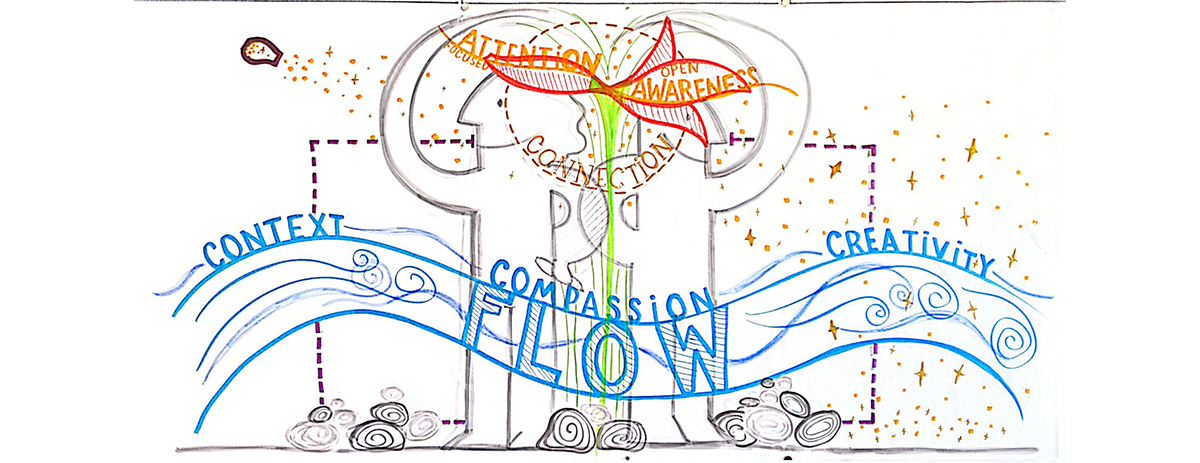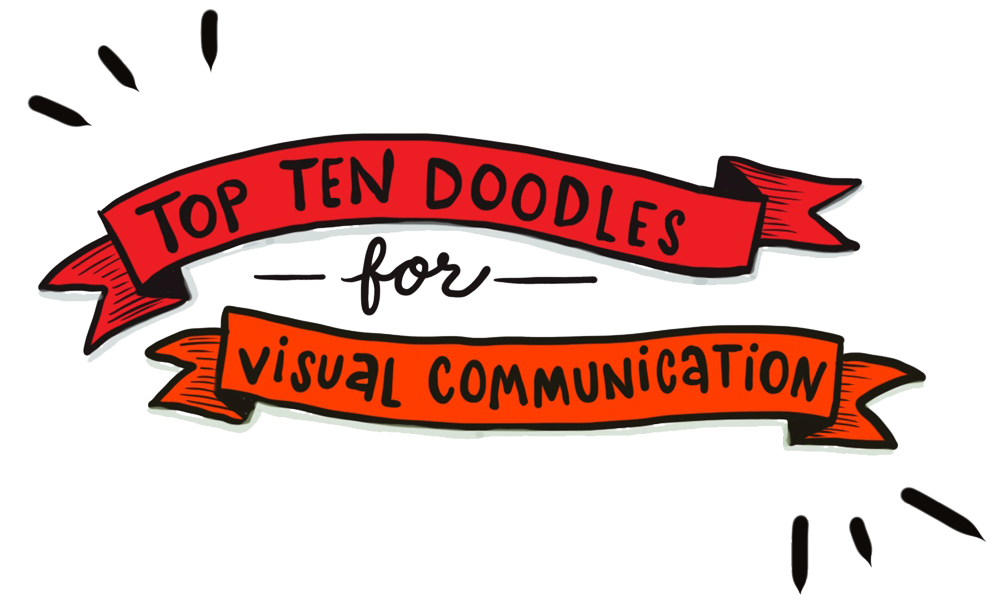An uncomfortable beginning
I was between projects and decided to take a short, self-directed online course, Levels of Scribing as outlined by Kelvy Bird in the book Generative Scribing, and based on Otto Scharmer’s 4 Levels of Listening.
I had read – OK, tried to read – Bird’s book, but could never get through it. I felt it was important as a professional visual practitioner to embrace the teachings of a thought leader who is highly regarded by many: visual and design thinkers, facilitators, academics, changemakers. A course like this might be able to help me ease into the concepts more readily than reading about them.
The lessons – there are writings, videos of the instructors and interviews with practitioners, reflections, hands-on practice, an online community for group discussions, and a student gallery space – made me uncomfortable. Like I’m shallow, and limited. I felt so… American. I skate along on the surface, where life is concrete, and not full of vague abstractions. I know I need to dig deeper; move out of familiar patterns; push past the discomfort; avoid the temptation to quit, thereby avoiding the unpleasant feeling of incomprehension and possible failure.
Maybe I won’t be successful in this but I’m willing to observe my resistance and record it.
Ways of being and doing
To begin, I learned that there are four ways of being/doing:
- From habit
- From curiosity
- With heart
- Within silence
I’m not much of a creature of habit (except to keep my dogs on a routine, which keeps them happy) as I enjoy novel and exciting experiences – approaching life with curiosity and heart resonates.
I believe in the power of silence (Have you watched the Netflix show You? I’m fascinated by how far Joe gets in sticky social situations simply by saying nothing and waiting for others to fill in the gaps).
I’m not much of a talker, I’m more of a listener – unless I feel that the listener is a really good listener – which doesn’t happen often – and then I open up and talk. I can have a conversation with anybody by asking questions, being curious and finding something interesting in their stories. My husband and I can spend a lot of time together being quiet; he is a deep introverted thinker and he appreciates this quality about me.
Lingo and frameworks
I’m introduced to many models and theories, and there is lingo I am not familiar with. What are social fields? What are facilitative moves? I’ve stepped into a different reality of graphic recording than the one I’ve known and practiced in for the last several years – a rarified world of visual practice that feels exclusive, an Upside Down of complicated models with organic arrows and flowy arcs like strangler vines.
These underlying frameworks always seem to have four parts. Downloading, Debate, Dialogue, Creative Presencing. Bubble, Adaptive, Reflective, Generative. Mirror, Differentiate, Reflect, Surface. There’s more, and it makes my head swim.
Speaking of listening
We are introduced to the idea that different levels of listening can help us “participate in a shift of awareness and possibility:”
- Level 1: Downloading – Functioning from past experience, reconfirming and reflecting what we already know.
- Level 2: Factual – Functioning from an open mind, noticing differences and data that disconfirm what we think we already know.
- Level 3: Empathic – Functioning with an open heart, to see a situation through the eyes of another, to make an emotional connection. We get out of our own skin, step back, and get added perspective that helps us direct our attention to the entirety of a person or situation.
- Level 4: Generative – Functioning with an open will, to connect with our capacity to let go and let come an emerging future possibility that reveals more fully who we are and who we want to be.
Let’s be truthful, most conversations are Level 1 download dumps, aren’t they? I want to listen at a Level 3 but will close myself up if it’s not reciprocated and then I’m at a Level 1 or 2. It’s frustrating and exhausting to be a good listener when you’re surrounded by bad listeners.
The quality of my listening changes depending upon the environment; for example, in a social situation, if the person I am talking to is a good listener, then I want to reciprocate. I care about them because they care about me. I am curious about them because they are curious about me. It does not feel good if the other person isn’t listening empathically and so I tend to lean towards distrust and not open myself fully, because that can hurt.
In a content-consuming situation, for instance, if I’m listening to the news or a podcast, I become more engaged if I trust the source to be fair; not one-sided; if there are gray areas and it’s not black and white.
In a work situation when I’m graphic recording, I try to operate at Level 3 but it depends on the content being delivered – sometimes it is just facts. A lot of times it is facts.
I don’t know what listening and scribing at Level 4 is.
There’s a state of flow I can reach when graphic recording when I’m listening so intently to what’s being spoken that everything else in my consciousness recedes. It doesn’t matter that I’m up in front of possibly hundreds of people who are watching everything I do and draw, and any fear or self-consciousness I may have been experiencing disappears. I wonder, is this what #4 is? Or is being able to scribe generatively predicated upon being able to enter this flow state?
As part of the course, we’re asked to draw a recited poem at Level 1, and then again at Level 2. I thought I understood the difference between the levels, but when I finish the exercise I realize I don’t know at what level I typically scribe at – I think it’s a mishmash.
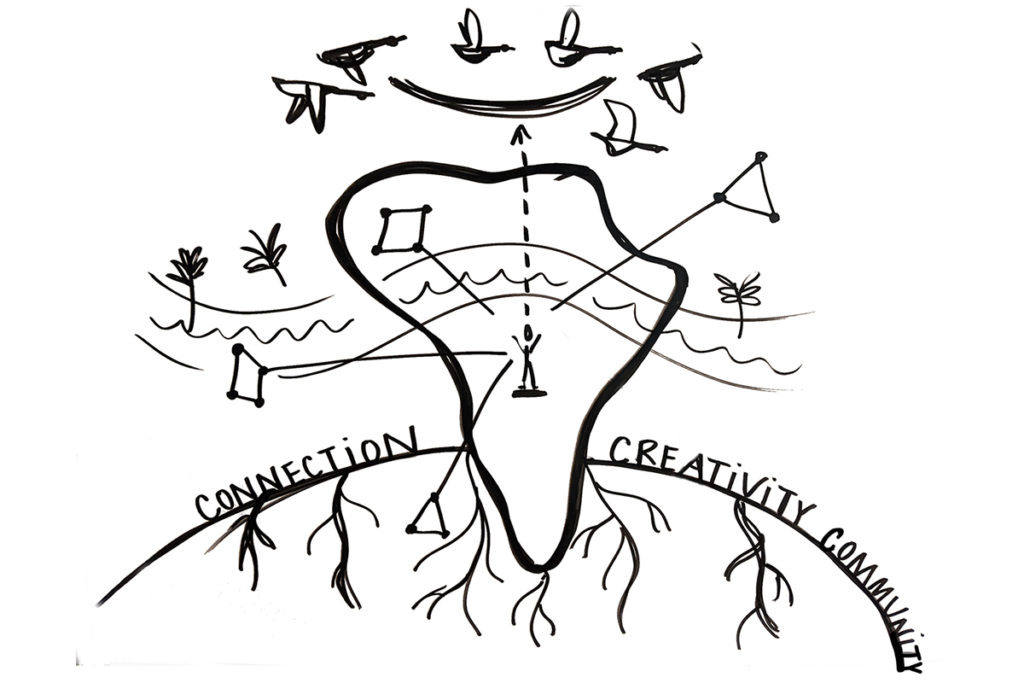
“The quality of results we create are a function of the inner place that we operate from.” – Otto Scharmer
Once again I’m reminded of my limitations. I’m often not satisfied with the results of my graphic recording work. I know there are so many areas in which I need improvement: use more white space, more direction and flow, more levels of hierarchy, nicer handwriting, better color consistency. It’s difficult being so critical of myself, but it’s also one of the aspects I love about this work in that I feel there are multitudes of opportunities for growth and improvement.
Container conditions
We learn about how to hold ourselves, personally and individually, and in groups; these are to “help us and groups feel safe, trust one another, and grow”. Again, there are four levels, or “fields”.
For Field 1, we’re advised to “keep the ‘open mind-open heart-open will’ clear”. Be open, OK. I’m either a total natural at this and do it all the time, or I’m not attuned to doing this at all. Although a facilitator colleague I work with told me in a debrief call after a recent session that one of the things she values most in working with me is that I “hold the space”.
In Field 2, we are to “practice suspension of our own views and ‘get out of the way’”.
For practice, we are given an exercise to scribe a short TV clip about climate crisis activism. Aware that I’m pretty left of center on the political spectrum, I try to keep my biases at bay, and am surprised by how easily I am able to empathize with the “other side”. One of the things that has always bothered me about conservatives is how belittling they can be towards liberals. But what I realize after scribing this contentious discussion is that both sides sound this way, and that the angry middle-aged woman responding to the strident young climate activist has completely legitimate reasons to sound put out.
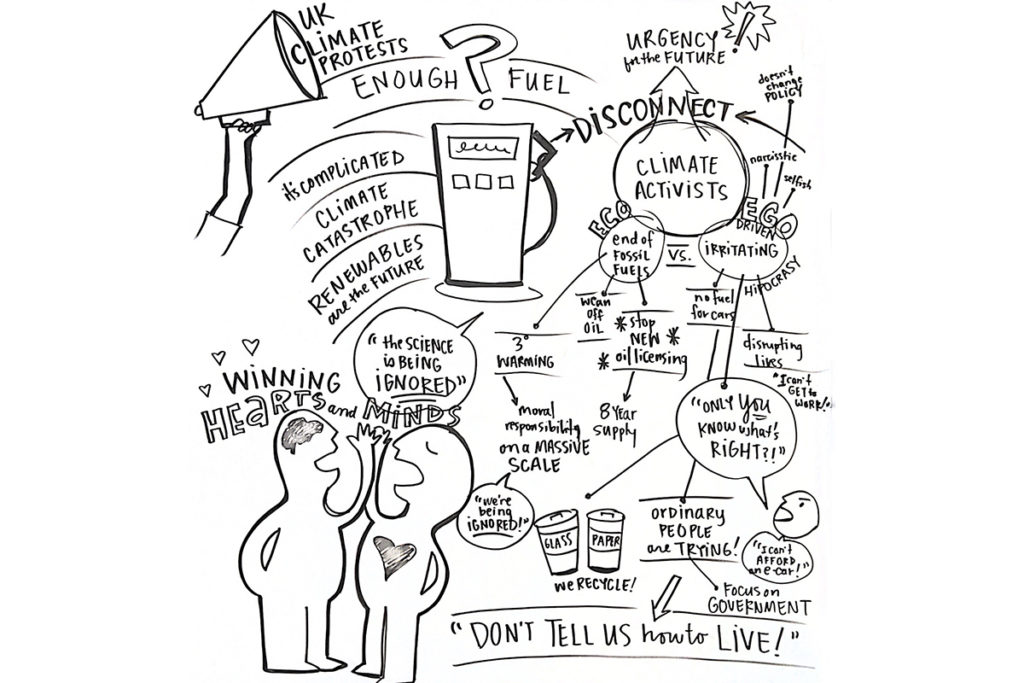
Field 3: “…consider the scribe as part of the collective; start to sense what is coming through the group.”
Ooof, did I not feel like part of the collective last week: I did a scribing session for a convening, led by a lead facilitator, who I had talked with prior to the session to review the agenda and my role in supporting the group. She has a background in community organizing and deftly led the fifty or so participants through the day while overseeing a handful of assistant facilitators. I was shocked when she failed to introduce me in the introductions, and halfheartedly instructed the group to engage with me around a poster with a discussion question that had already passed by on the agenda, and which had received little interaction, and furthermore was no longer visible to participants.
I thought I had understood the design and expectations of the session but if I couldn’t trust the facilitator – because she clearly didn’t trust me – how was I going to help the people in the room feel seen and heard? Something obviously fell through the cracks, and I’m guessing there was a gap in communication between the client – who hired both of us – and the facilitator, who designed the session and needed to work with me because the client brought me in.
Field 4? Not even close. “Hold Possibility Expand to embrace the unknown; “let go” in order to “let come”; accept that something can come into being that will fundamentally shift our understanding of things; be willing to change; be with time slowing down; support the genius of the group and the profound beauty of the moment.”
I certainly need to get a better handle on container conditions going forward.
Different levels of scribing
Level 4 is “generative scribing, where we sense and uncover the highest potential for the systems we serve, by connecting with source and social fields. On this level we reveal what wants to be seen… we connect with our capacity to let go and let come an emerging future possibility for who we are and who we want to be.”
I struggle to understand what this looks like and in what context it might emerge. I don’t think I work with these kinds of clients, or do I? Could I?
I was reminded of Brandy Agerbeck’s Visual Organization Scale that I had learned a few years ago while participating in her Lab, and which felt highly accessible to me – so I reviewed it, and and wondered if there was a direct correlation between Level 7: Synthesis, the furthest level on the right side of the scale, and Levels of Scribing’s Level 4? Agerbeck says “Synthesis involves creating something new from your sources. It is that elusive aha moment where the mental puzzle pieces click into place, and a higher level understanding is revealed.”

So, yes, similar, maybe even the same – I think?
Be open and curious
I took the course. I read, listened, watched hours of conversations, and took a lot of notes (the written kind and the sketched kind). Several times after I finished a video I would ask myself, what did they even say?
The content felt opaque and like I needed to have prior knowledge, or some kind of highly attuned spirituality, in order to proceed.
I’m not any closer to understanding how Level 4 works or even if it does “work” (although clients and experts were brought into the course to explain that it does). I was able to view several examples of Level 4 work and they did not mean much to me, most likely because I was not part of the conversation in that room at that time, and viewing the visuals afterwards is not the same as having the direct experience.
I would sum up my main takeaway with two words: Be open.
I know how highly simplistic and shallow this sounds. Like anyone who embarks on a journey of learning and tries to broaden their horizons, this course sparked feelings of inadequacy as I wrestle with imposter syndrome.
